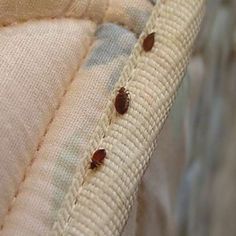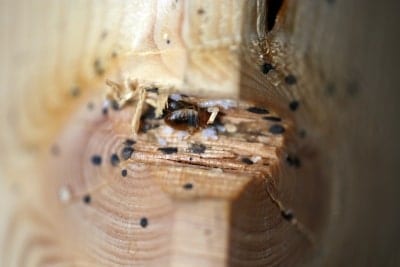Understanding Bed Bug Control: An In-depth Check Out Evaluation and Therapy Techniques
In the world of pest monitoring, few difficulties are as relentless and disturbing as bed pest infestations. The elusive nature of these little pests, combined with their capacity to rapidly increase and spread out, can make eradicating them a facility task. Nonetheless, understanding bed bug control is not an impossible accomplishment. By thoroughly recognizing their behavior, conducting extensive assessments, identifying vital problem locations, applying customized therapy approaches, and developing preventative actions, it is possible to recover areas from these unwelcome trespassers. This thorough take a look at examination and therapy methods provides a thorough overview to navigate the intricacies of bed bug monitoring, losing light on efficient techniques that can assist in combatting these resilient adversaries.
Recognizing Bed Pest Habits

Bed bugs launch aggregation pheromones, which bring in others to cluster together in concealing areas, aiding in their reproduction and survival. This behavior helps with the spread of problems within a residential property and to bordering units. In addition, bed pests have shown resistance to different chemicals, making elimination efforts a lot more intricate.

Conducting Thorough Evaluations
Given the elusive nature of bed pests and their propensity to conceal in inaccessible areas, comprehensive assessments play a vital duty in detecting and resolving infestations successfully. Beginning by analyzing locations where bed insects are known to conceal, such as mattress joints, box springs, bed frameworks, and head boards.
Use tools like flashlights, multiplying glasses, and hole devices to assist in the examination procedure. Seek indicators of bed bug activity, including dark areas (fecal matter), dropped skins, and actual bugs. Remember that not all signs may show up to the naked eye, so a keen interest to information is paramount. It is likewise a good idea to check neighboring areas or systems if bed bugs are located, as problems can rapidly spread (bed bug exterminator seattle topbedbugkillersofseattle). By carrying out complete examinations regularly, very early discovery and effective treatment of bed pests can be accomplished, reducing the threat of a prevalent problem.
Identifying Secret Invasion Locations
To efficiently combat bed insect problems, it is important to pinpoint crucial areas where these bugs are likely to gather together and flourish. Bed pests are nocturnal pests that conceal in splits and gaps during the day, appearing during the night to prey on blood. Typical crucial infestation locations consist of the joints of mattresses, box springtimes, bed structures, and headboards. These places give bed bugs with simple accessibility to their hosts while offering hiding areas close by. In addition, upholstered furniture such as sofas and chairs, along with drapes and rug sides, are prime concealing spots for bed bugs. Messy areas, such as stacks of garments or documents, also supply many harborage websites for these bed bug insecticide pests.
Bed insects can likewise infest electric outlets, photo structures, and even behind loose wallpaper. Evaluating these vital Check Out Your URL areas thoroughly is necessary for effective bed pest control. bed bug exterminator seattle topbedbugkillersofseattle. Early detection and treatment in these problem hotspots can prevent the spread of bed pests to various other components of the residential property and minimize the seriousness of the problem
Implementing Effective Treatment Techniques
Upon recognizing vital infestation areas, the next essential step in combating bed pests is applying reliable therapy approaches. One of the most usual strategy to eradicating bed bugs entails a mix of non-chemical control techniques, such as warm treatment, vacuuming, and steam cleaning, along with targeted pesticide applications. Heat therapy, which includes increasing the infested location to temperature levels deadly to bed bugs, is highly effective in eliminating bed pests in any way life stages, including eggs. Vacuuming and steam cleansing can help in reducing the bed bug populace, particularly in hard-to-reach locations like fractures and holes.
Pesticide applications are frequently needed to supplement non-chemical techniques, with professionals using a range of items such as desiccants, insect growth regulators, and residual pesticides to target bed insects directly. Appropriate application methods, focusing on locations where bed insects conceal or take a trip, are crucial for successful therapy. bed bug exterminator seattle topbedbugkillersofseattle.

Protecting Against Future Bed Insect Events
To prevent the renewal of bed bugs, it is essential to inform people on the signs of an invasion and the importance of very early detection. Furthermore, applying Read Full Article positive measures like utilizing bed bug-proof bed mattress coverings, securing cracks and crevices, and minimizing mess can make it harder for bed pests to develop themselves in a home.
Laundering bedding and clothing frequently in hot water and vacuuming frequently can remove possible hiding places for bed insects. When traveling, examining hotel rooms for indicators of bed pests and keeping luggage elevated off the flooring can stop bringing these bugs home.
Final Thought
In final thought, mastering bed bug control requires a deep understanding of their actions, thorough evaluations, identification of essential infestation areas, efficient therapy approaches, and avoidance actions. By complying with these steps vigilantly, individuals can efficiently handle and eliminate bed bug invasions in their areas. It is important to stay vigilant and aggressive to make certain that bed pests do not end up being a repeating problem.